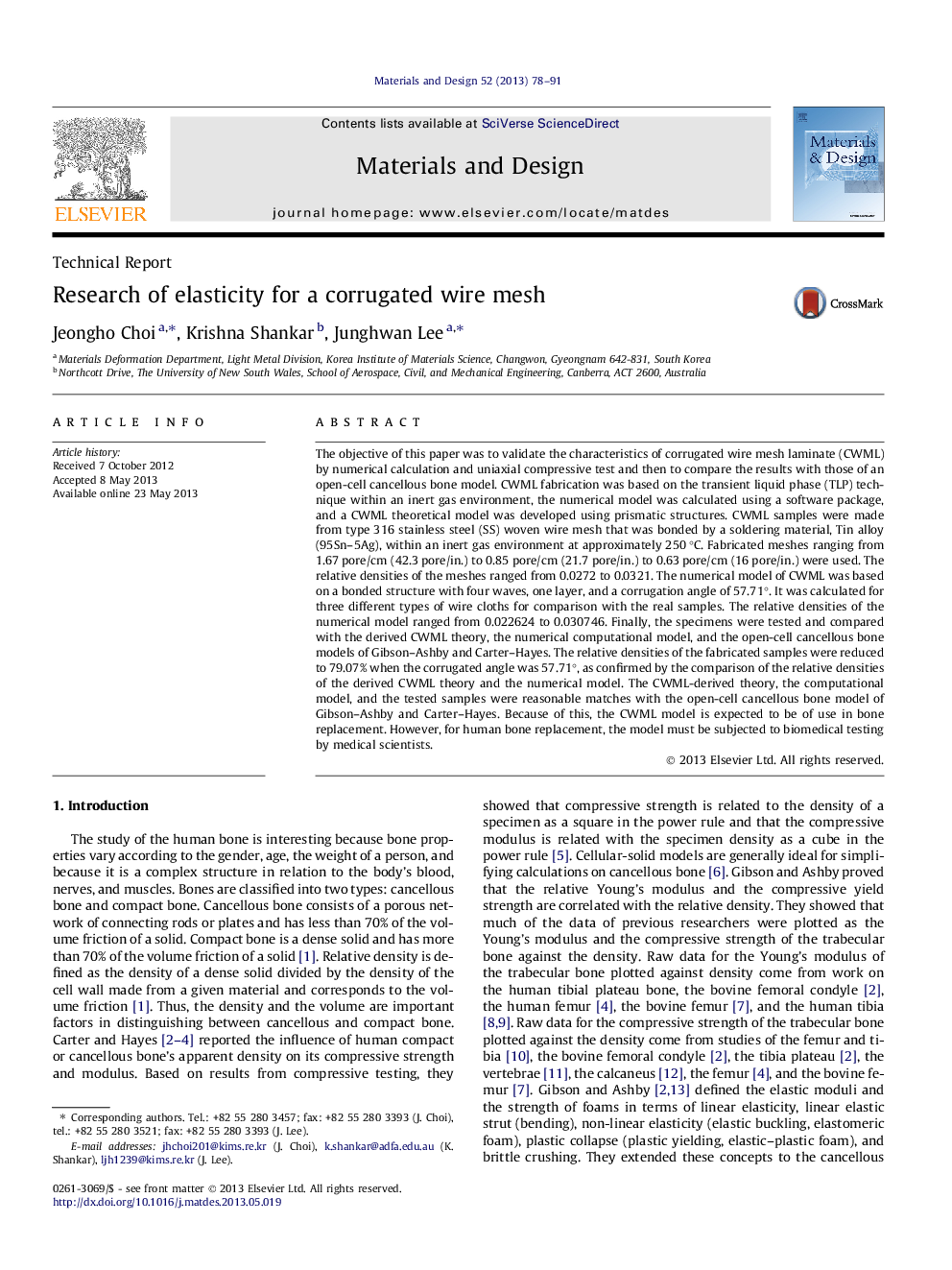| Article ID | Journal | Published Year | Pages | File Type |
|---|---|---|---|---|
| 7221078 | Materials & Design (1980-2015) | 2013 | 14 Pages |
Abstract
The objective of this paper was to validate the characteristics of corrugated wire mesh laminate (CWML) by numerical calculation and uniaxial compressive test and then to compare the results with those of an open-cell cancellous bone model. CWML fabrication was based on the transient liquid phase (TLP) technique within an inert gas environment, the numerical model was calculated using a software package, and a CWML theoretical model was developed using prismatic structures. CWML samples were made from type 316 stainless steel (SS) woven wire mesh that was bonded by a soldering material, Tin alloy (95Sn-5Ag), within an inert gas environment at approximately 250 °C. Fabricated meshes ranging from 1.67 pore/cm (42.3 pore/in.) to 0.85 pore/cm (21.7 pore/in.) to 0.63 pore/cm (16 pore/in.) were used. The relative densities of the meshes ranged from 0.0272 to 0.0321. The numerical model of CWML was based on a bonded structure with four waves, one layer, and a corrugation angle of 57.71°. It was calculated for three different types of wire cloths for comparison with the real samples. The relative densities of the numerical model ranged from 0.022624 to 0.030746. Finally, the specimens were tested and compared with the derived CWML theory, the numerical computational model, and the open-cell cancellous bone models of Gibson-Ashby and Carter-Hayes. The relative densities of the fabricated samples were reduced to 79.07% when the corrugated angle was 57.71°, as confirmed by the comparison of the relative densities of the derived CWML theory and the numerical model. The CWML-derived theory, the computational model, and the tested samples were reasonable matches with the open-cell cancellous bone model of Gibson-Ashby and Carter-Hayes. Because of this, the CWML model is expected to be of use in bone replacement. However, for human bone replacement, the model must be subjected to biomedical testing by medical scientists.
Related Topics
Physical Sciences and Engineering
Engineering
Engineering (General)
Authors
Jeongho Choi, Krishna Shankar, Junghwan Lee,
